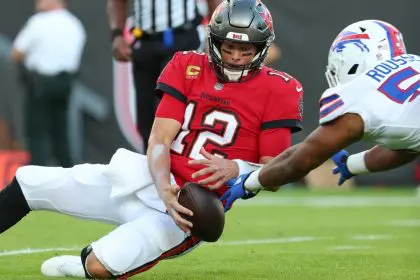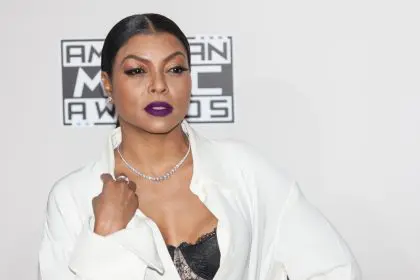In the shadowy alleys of American history, few figures loom as large as the mafia gangsters of the 20th century. These men, with their sharp suits and sharper instincts, built empires on the back of Prohibition, gambling, and a code of silence that kept the law at bay for decades. Their names have become synonymous with a particular brand of American ambition — ruthless, unapologetic, and larger than life.
Here are ten of the most infamous mafia figures whose legacies continue to captivate our collective imagination, for better or worse.
Al Capone: Chicago’s scarface kingpin
In the roaring twenties, one name struck fear and awe into the hearts of Chicagoans: Al Capone.
Capone’s rise to power during Prohibition was as intoxicating as the liquor he smuggled. His empire, built on bootlegging, gambling, and protection rackets, made him a millionaire by 26. But it was his brutal tactics, culminating in the St. Valentine’s Day Massacre, that cemented his place in gangster lore.
Capone’s reign ended not with a bang, but with a whimper — convicted of tax evasion in 1931. His fall from grace became a cautionary tale: even the mightiest can be brought down by the most mundane of crimes.
Lucky Luciano: The mafioso modernizer
If Al Capone was the face of the mob, Charles “Lucky” Luciano was its architect.
Luciano’s vision transformed the mafia from warring factions into a corporate-style organization. By establishing “The Commission,” a governing body for organized crime, he ushered in an era of relative peace and unprecedented profitability.
His legacy extends beyond the underworld; Luciano’s cooperation with the U.S. government during World War II remains a subject of fascination and debate among historians.
John Gotti: The dapper don
In the media-saturated 1980s, John Gotti brought the mob into the spotlight with unapologetic flamboyance.
Gotti’s tailored suits and media savvy earned him the nickname “The Dapper Don.” His ability to evade conviction in three high-profile trials added another moniker: “The Teflon Don.” But in 1992, the Teflon wore off, and Gotti was sentenced to life in prison, marking the twilight of the mafia’s golden age.
Vito Genovese: The ambitious usurper
Vito Genovese’s name became synonymous with ruthless ambition in the annals of organized crime.
Genovese’s rise to power was marked by cunning and brutality. He orchestrated the assassination of his boss, Albert Anastasia, in a brazen bid for control. His reign was short-lived, however, as his overreach led to his downfall and imprisonment in 1959.
Carlo Gambino: The silent strategist
In a world of flashy gangsters, Carlo Gambino preferred to operate in the shadows.
Gambino’s low-key approach and business acumen made him one of the most powerful and long-lived mafia bosses. Under his leadership, the Gambino family became the most powerful criminal organization in America. Gambino’s ability to avoid prosecution and die of natural causes in 1976 remains a rarity in mob history.
Frank Costello: The political fixer
Frank Costello understood that true power lay not just in violence, but in influence.
Costello’s political connections and legitimate business ventures earned him respect in both the underworld and upper echelons of society. His testimony before the Kefauver Committee in 1951 provided a rare public glimpse into the workings of organized crime.
Meyer Lansky: The mob’s money man
Meyer Lansky proved that the pen could be mightier than the sword in the world of organized crime.
Lansky’s financial acumen transformed mob money into legitimate wealth. His innovation in money laundering and offshore banking made him indispensable to the mafia while keeping him largely out of legal trouble.
Bugsy Siegel: The man who saw the desert bloom
Benjamin “Bugsy” Siegel had a vision that transformed a dusty Nevada town into a glittering oasis of vice.
Siegel’s development of the Flamingo Hotel laid the foundation for modern Las Vegas. But his dream came at a cost — overruns and accusations of skimming led to his assassination in 1947, turning him into a cautionary tale of mob justice.
Albert Anastasia: The mafia’s executioner
Few names inspired as much fear in the underworld as Albert Anastasia.
As the head of Murder, Inc., Anastasia was responsible for hundreds of contract killings. His reign of terror ended in a hail of bullets in 1957, gunned down while sitting in a barbershop chair — a scene that would be immortalized in mob lore and popular culture.
Joe Bonanno: The mafia’s last don
Joseph Bonanno’s long life spanned the rise and decline of the American mafia.
Bonanno’s career took him from Prohibition-era bootlegging to becoming one of the original bosses of New York’s Five Families. His attempt to consolidate power led to the “Banana War” of the 1960s, nearly tearing the mafia apart. In his later years, Bonanno became an unlikely author, penning a memoir that offered rare insights into the mafia’s inner workings.
The myth and the reality
These ten men, with their complex legacies of violence, ambition, and cultural impact, have become more than historical figures. They are now archetypes, their stories woven into the fabric of American mythology.
Yet it’s crucial to remember the real cost of their actions — the lives destroyed, the communities terrorized, and the corruption that reached into the highest levels of society. Their stories continue to fascinate not because they should be celebrated, but because they offer a dark mirror to the American dream, showing how ambition untethered from morality can lead to power, wealth, and ultimately, destruction.
As we continue to grapple with organized crime in its modern forms, these infamous figures serve as a reminder of the enduring allure of power and the heavy price it often demands.
This story was created using AI technology.











